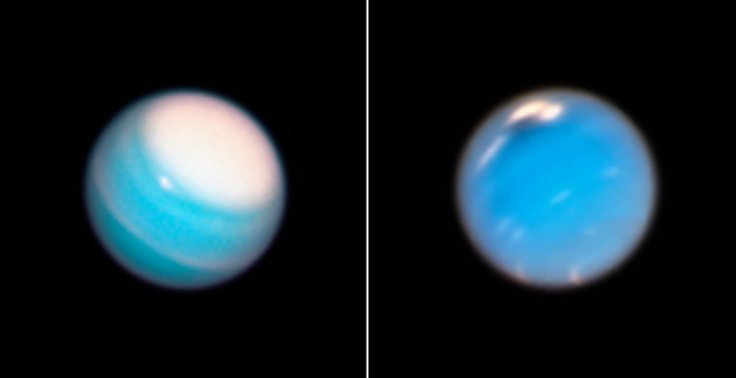
NASA's Hubble telescope has discovered a mysterious storm in Neptune and experts believe that studying about these storms could help to understand more details about the seasons in the planet.
It should be noted that this storm which appeared during the planet's southern summer is the fourth and the latest dark vortex captured by the Hubble telescope since 1993. The Voyager 2 spacecraft had also discovered two dark storms in 1989 when it flew near the planet.
The American space agency, in a statement, revealed that seasons in Neptune and Uranus are much longer than on earth and a single season in these planets used to last decades than months. Experts revealed that these dark storms usually appear every four to six years at different latitudes and disappear after about two years.
This study led by the University of California, Berkeley, undergraduate student Andrew Hsu estimated that the latest storm which they discovered is roughly 6800 miles across.
Data obtained by the Hubble telescope revealed that increased cloud activity was there in Neptune during 2016 and it was actually preceding the formation of the dark cloud. Scientists believe that these dark storms might be penetrated deep into the Neptune's atmosphere, but it usually becomes visible only when it reaches high altitudes.
NASA also released the snapshot of Uranus that shows a vast bright stormy cloud cap across the north pole. The space agency revealed that the stormy cloud cap might be the result of its unique rotation.
"Unlike every other planet in the solar system, Uranus is tipped over almost onto its side. Because of this extreme tilt, during the planet's summer, the Sun shines almost directly onto the north pole and never sets. Uranus is now approaching the middle of its summer season, and the polar-cap region is becoming more prominent," wrote NASA on its website.









